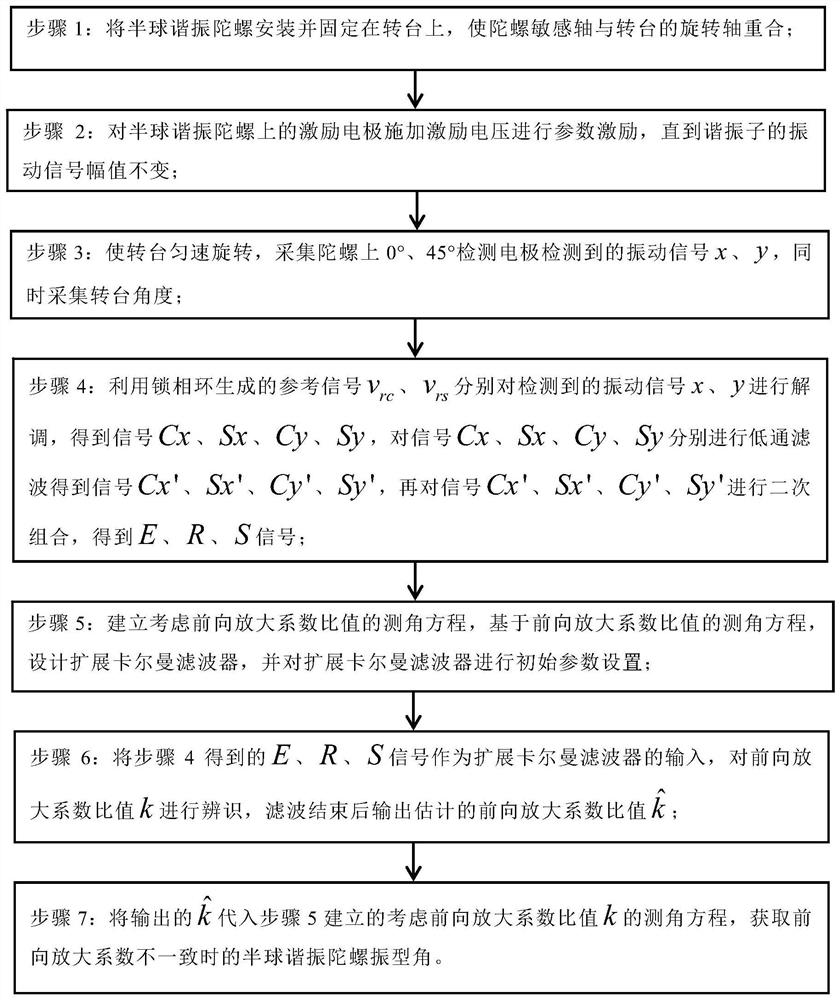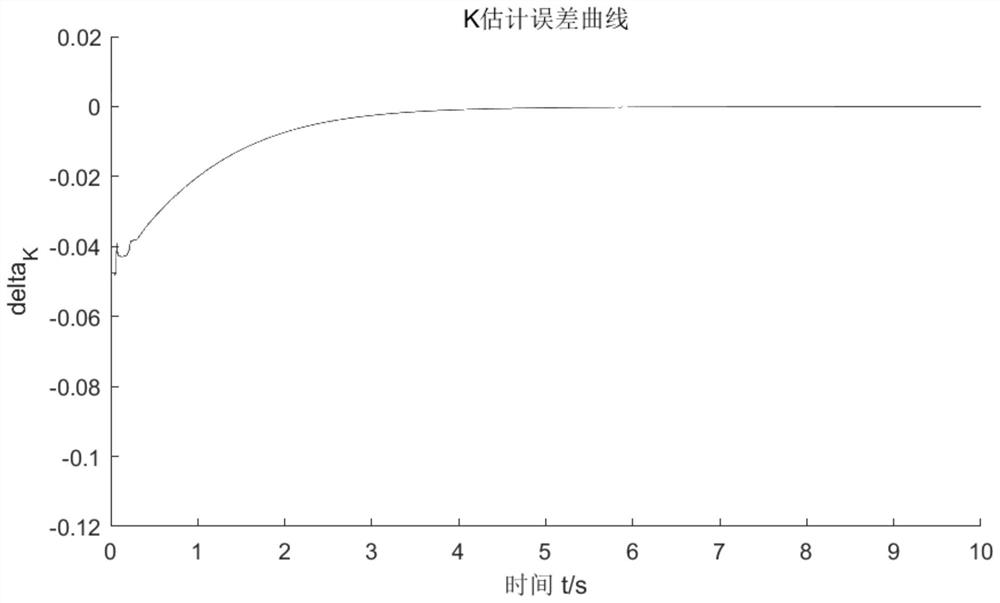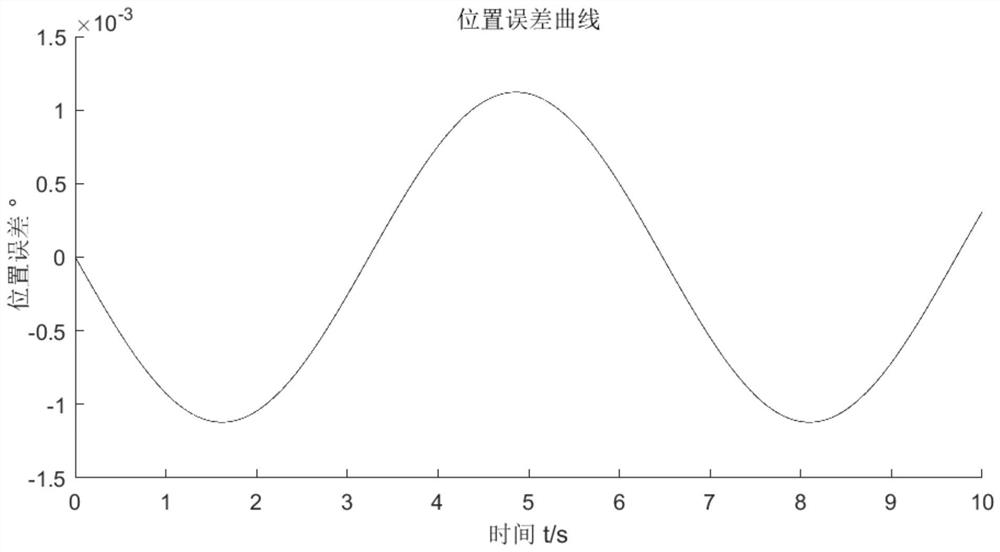A Method for Obtaining Mode Shape Angle of Hemispherical Resonator Gyroscope When the Forward Amplification Factors Are Inconsistent
A hemispherical resonant gyroscope and forward amplification technology, applied in the field of inertia, can solve the problems of the hemispherical resonant gyroscope being unable to accurately measure the angle of the carrier and reducing the navigation accuracy, so as to improve the navigation accuracy and achieve high-precision angle measurement and accuracy. high effect
- Summary
- Abstract
- Description
- Claims
- Application Information
AI Technical Summary
Problems solved by technology
Method used
Image
Examples
specific Embodiment approach 1
[0023] Embodiment 1: Combining figure 1 This embodiment is described. The specific process of a method for obtaining the mode angle of a hemispherical resonant gyroscope when the forward amplification factor is inconsistent in this embodiment is as follows:
[0024] The purpose of the present invention is to solve the problem of error in angle measurement when the forward amplification coefficients of the detection loops of the hemispherical resonant gyroscope are not equal, to provide a method for obtaining the mode angle of the hemispherical resonant gyroscope when the forward amplification coefficients are inconsistent, and to propose an improved angle measurement method. formula, based on this formula, an extended Kalman filter is established. While rotating the gyro, the vibration signals collected by the 0° and 45° electrodes are demodulated and low-pass filtered, and the obtained signals E, R, and S are used as extended The input of the Kalman filter realizes the identi...
specific Embodiment approach 2
[0033] Embodiment 2: The difference between this embodiment and Embodiment 1 is that in the step 2, the excitation electrodes are arranged on the hemispherical resonant gyroscope at intervals. like Figure 4 shown.
[0034] Other steps and parameters are the same as in the first embodiment.
specific Embodiment approach 3
[0035] Embodiment 3: The difference between this embodiment and Embodiment 1 or 2 is that in the step 4, the reference signal v generated by the phase-locked loop is used. rc , v rs Demodulate the detected vibration signals x and y respectively to obtain the signals Cx, Sx, Cy, and Sy, and perform low-pass filtering on the signals Cx, Sx, Cy, and Sy to obtain the signals Cx', Sx', Cy', Sy ', and then combine the signals Cx', Sx', Cy', Sy' twice to obtain the E, R, S signals; the specific process is:
[0036] The reference signal v generated by the phase-locked loop rc , v rs Demodulate the detected vibration signals x and y respectively to obtain the signals Cx, Sx, Cy, and Sy. The expressions are:
[0037]
[0038]The signals Cx, Sx, Cy, and Sy are subjected to low-pass filtering to filter out the double frequency in the signals Cx, Sx, Cy, and Sy, respectively, to obtain the signals Cx', Sx', Cy', Sy';
[0039] The signals Cx', Sx', Cy', and Sy' are combined twice to ...
PUM
 Login to View More
Login to View More Abstract
Description
Claims
Application Information
 Login to View More
Login to View More - R&D
- Intellectual Property
- Life Sciences
- Materials
- Tech Scout
- Unparalleled Data Quality
- Higher Quality Content
- 60% Fewer Hallucinations
Browse by: Latest US Patents, China's latest patents, Technical Efficacy Thesaurus, Application Domain, Technology Topic, Popular Technical Reports.
© 2025 PatSnap. All rights reserved.Legal|Privacy policy|Modern Slavery Act Transparency Statement|Sitemap|About US| Contact US: help@patsnap.com



